
Many species are quite easy to care for.
But they come with some pretty specific care requirements.
A lot of new snake owners stumble into mistakes that can harm their pets, often without even realizing it.
Snakes just aren’t like cats or dogs—they’ve got their own rules.
Knowing the most common snake care slip-ups can save you a ton of heartache and keep your snake healthy for years.
From setting up their home to figuring out feeding and handling, there are so many details that matter.
Sometimes, knowing what not to do is just as important as following the right advice.
Most Common Mistakes When Caring For Pet Snakes
If you are a new snake owner, you will be far ahead of the game after reading through this list. You will be able to avoid the most common mistakes new owners make and your new pet will be eternally grateful.
1. Improper Heating And Lighting Setup
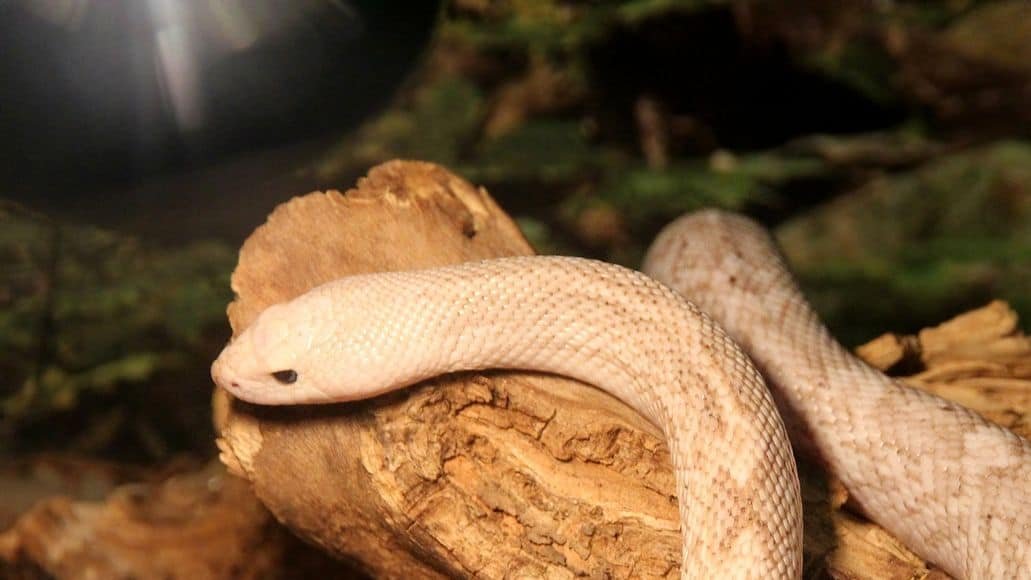
Getting the temperature right trips up a lot of new snake owners. Snakes need both a warm side and a cool side in their tank. That way, your snake can choose where it wants to be. The actual temperatures they need can vary considerably from one species to the other, so do your research.
Use a proper heat source like an under-tank heater or ceramic heat emitter. Skip the heat rocks. Those can burn your snake.
Lighting often gets ignored. Most snakes don’t need UVB like some reptiles, but a regular day/night cycle really helps. Just pop a simple light on a timer: 12 hours on, 12 hours off. It’s a small thing, but it helps your snake keep track of time.
Don’t guess at the temperature. Use a digital thermometer with a probe. Seriously, stick one on both sides of the tank.
If the tank’s too hot or cold, your snake might stop eating or struggle with digestion. Not ideal. Check your setup every so often to make sure nothing’s out of whack.
2. Feeding Snakes Too Frequently
Some owners feed their snakes like they’d feed a cat or dog—every day. That’s a classic rookie mistake. Snakes have slow metabolisms and just don’t need much food. In the wild, they might go weeks between meals.
If you feed too often, your snake can become fat. That puts a strain on their organs and can even shorten their life. Overfeeding can also make your snake regurgitate its food. It’s gross, stressful, and not good for them.
Most adult snakes do fine with a meal every 1-2 weeks. Young snakes eat more often, maybe every 5-7 days. It really depends on the species and age.
Ball pythons? Usually every 7-14 days. Corn snakes? More like every 5-7 days. Always double-check for your snake’s species.
Take a look at your snake’s shape. You want a gentle hourglass from above—not a chunky noodle. If they’re looking round, it’s time to cut back on food.
3. Handling Snakes Right After Feeding
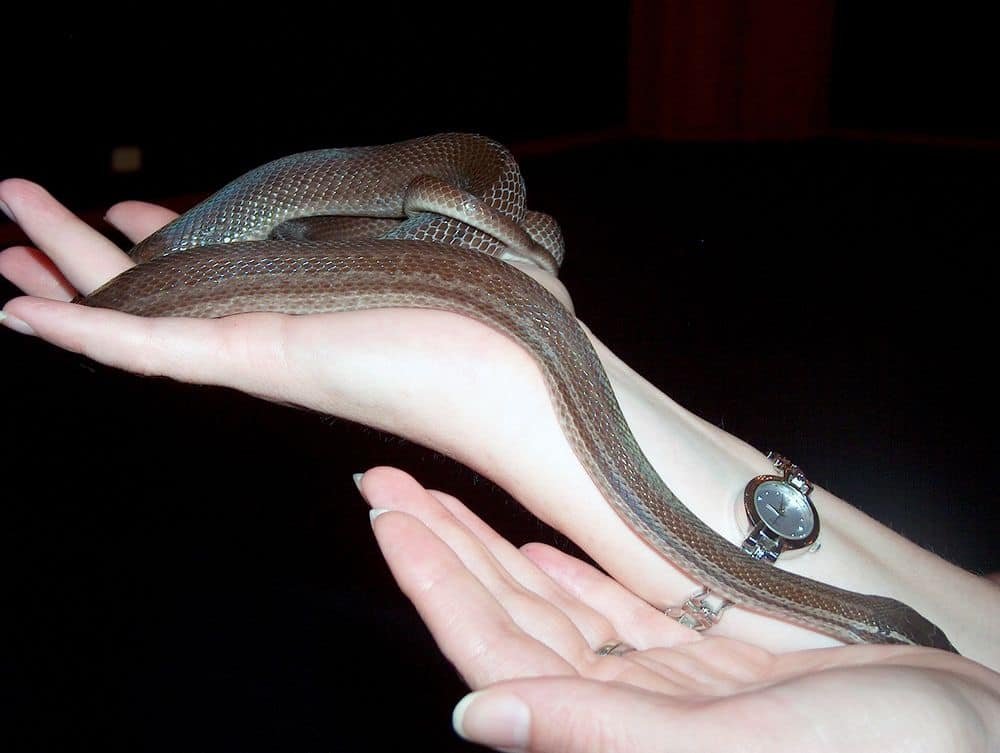
A lot of new owners can’t resist picking up their snake right after it eats. Not a great idea. Snakes need time to digest. If you handle them too soon, they might throw up their meal. That’s stressful and can even cause injury.
Give it at least 24 hours before handling. Big snakes might need even longer. If they do regurgitate, it’s rough on their system and wastes the meal. No one wants that.
Your snake might act sluggish or heavy after eating. That’s totally normal—it’s just digesting. Unless it’s an emergency, let your snake chill after a meal. If you absolutely have to move them, do it gently and support their whole body.
4. Choosing The Wrong Enclosure Size
Picking a tank that’s too small can mess with your snake’s wellbeing. Your snake can’t stretch out or move around. That’s stressful and unhealthy over time.
The right size depends on the species and age. Adult ball pythons need at least a 4’ x 2’ tank. Smaller snakes need less, but still need to move around.
Your snake should be able to stretch out fully along the tank. Make sure there’s room for both warm and cool zones. You can start young snakes in smaller tanks, but be ready to upgrade. They grow faster than you’d think.
If your snake’s exploring and moving around, you’re probably on the right track with the enclosure size.
5. Neglecting Humidity Requirements
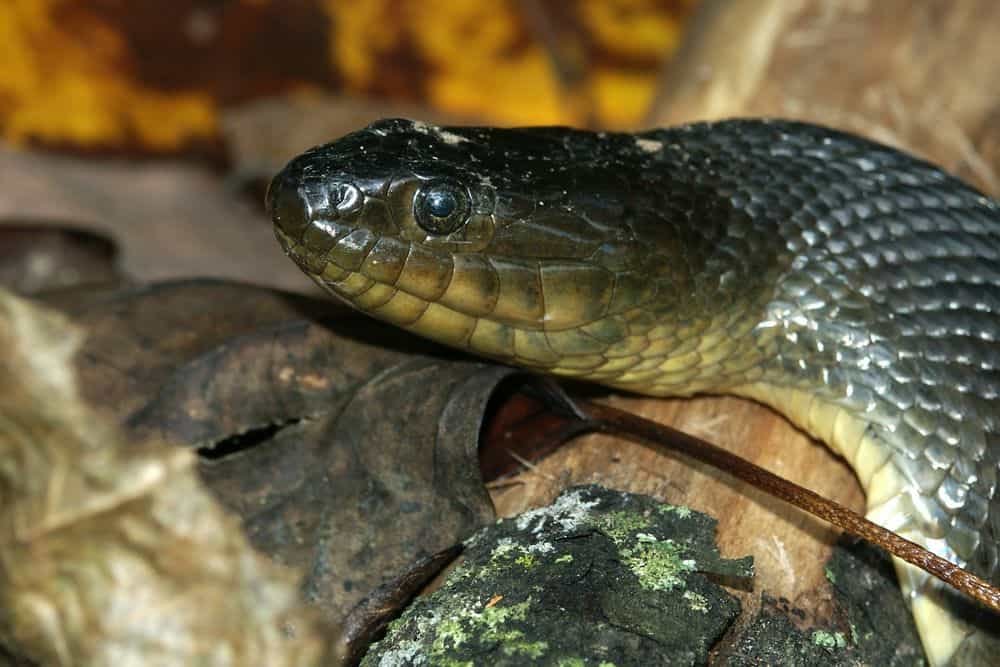
Humidity often gets overlooked. But it matters a lot. Different species want different humidity. Desert snakes need it dry; rainforest snakes want more moisture. You’ve got to check your species’ needs.
Wrong humidity can lead to dehydration, breathing issues, or bad sheds. None of that is fun for your snake.
Stuck shed is a classic sign humidity is too low. If your snake seems less active or stressed, that could be another clue.
Use a humidity gauge (hygrometer) in the tank. They’re cheap and make life easier. To boost humidity, try a bigger water bowl or mist the tank. Some substrates, like cypress mulch, help hold moisture.
Don’t just wing it—check humidity regularly and adjust as needed.
6. Using Incorrect Substrate
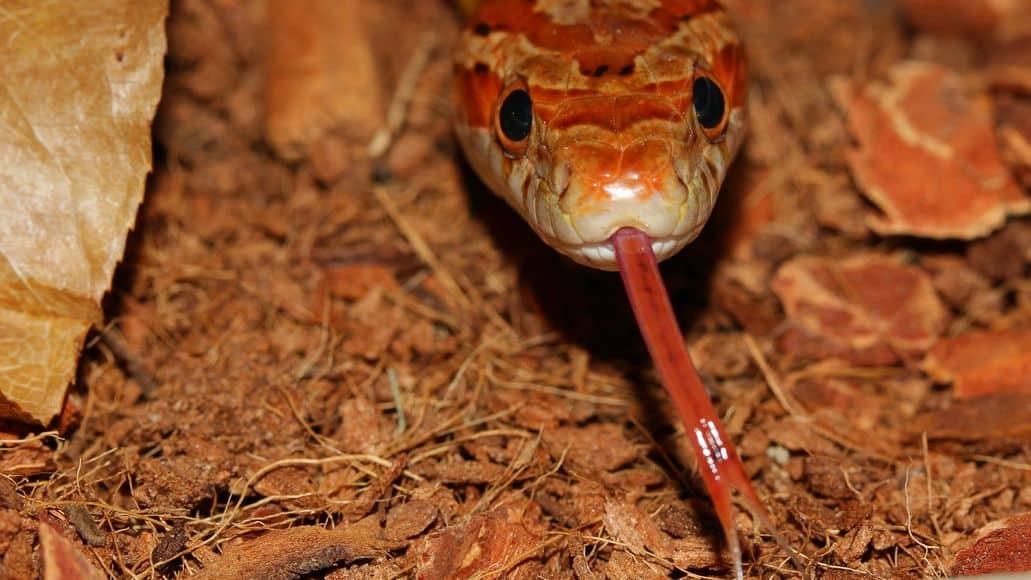
The wrong bedding can cause all sorts of problems for your snake. Cedar and pine shavings are a no-go. The oils can mess with your snake’s breathing and skin.
Sand? Also not great. It can get stuck in their mouth or cause stomach blockages. Newspaper is safe, but honestly, it’s not very natural. Your snake can’t burrow or hide like it would in the wild.
Some substrates hold too much moisture, which can lead to mold and bacteria—bad news for your snake’s health. Go for snake-friendly options: cypress mulch, aspen shavings, or even just paper towels. They’re safe and help with humidity.
And yeah, you’ll need to clean and swap out the bedding regularly. Even the best stuff gets gross over time.
7. Ignoring Signs Of Illness
Snakes are pros at hiding when they’re sick. It’s just in their nature. If you’re not paying close attention, you might miss early warning signs. Usually, behavior changes show up before anything obvious.
If your snake suddenly stops eating or eats way less, that’s a red flag. Notice if they’re less active or always hiding. That could mean something’s up.
Check for weird breathing—mouth breathing or wheezing means you should act fast. Trouble shedding or bits of old skin sticking around? Another sign.
Look for mites, cuts, or swelling. These things won’t fix themselves. If you spot any of this, don’t wait it out. Find a reptile vet ASAP. The sooner you catch things, the better your snake’s chances.
8. Not Researching Specific Species Needs
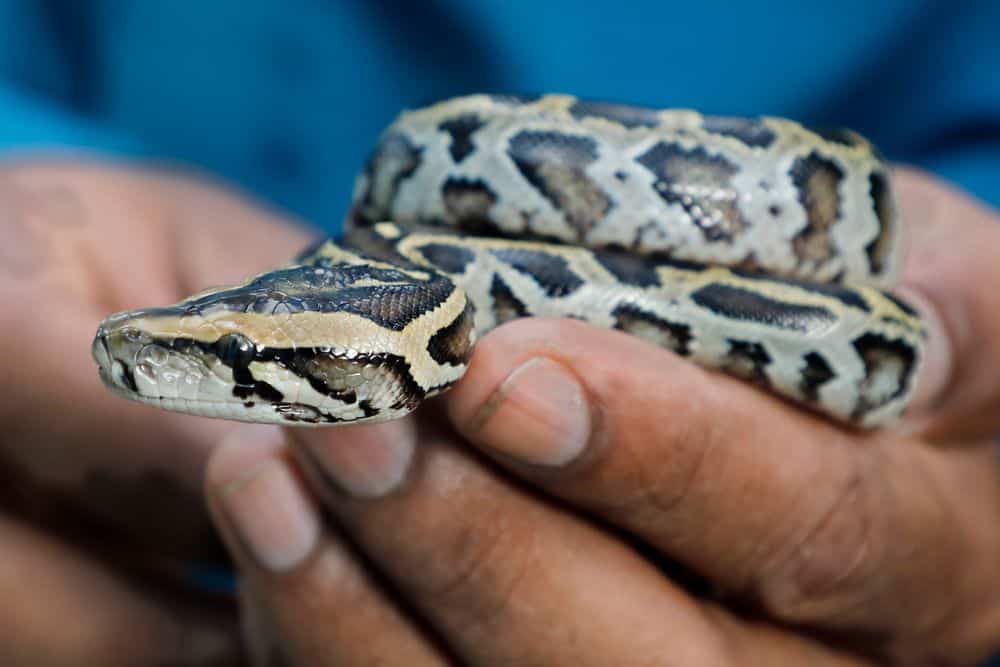
Every snake species is different. What works for a ball python won’t always work for a corn snake.
Temperature, humidity, diet, even enclosure shape—it all varies. Some snakes want it hot, others cool. Some need to climb, others burrow.
Some eat mice, others need rats or something else entirely. Meal size and schedule? That changes, too.
Before you bring home a snake, dive into the specifics for that species. Learn what they eat, how warm they like it, how big they’ll get, and what kind of home they need. It might take a little time, but it’s worth it. Most snake health issues crop up when owners skip this step.
9. Overhandling Or Stressing The Snake
It’s tempting to handle your snake a lot, especially when it’s new. But that’s a fast way to stress them out. Snakes need time to chill and feel safe. Too much handling can make them sick.
Don’t pick them up right after feeding—they need to digest. Wait at least a day. When you first bring a snake home, let it settle in for a week before handling. Give them space to adjust.
Watch for stress: hiding all the time, not eating, fast breathing, or staying tightly coiled. Limit handling to 2 to 3 times a week, 10 to 15 minutes tops each time.
Always support the whole body. Be gentle—never grab just the head or tail. If your snake seems cranky or just not into it, respect that. Forcing interaction only makes things worse.
10. Failing To Provide Hiding Spots
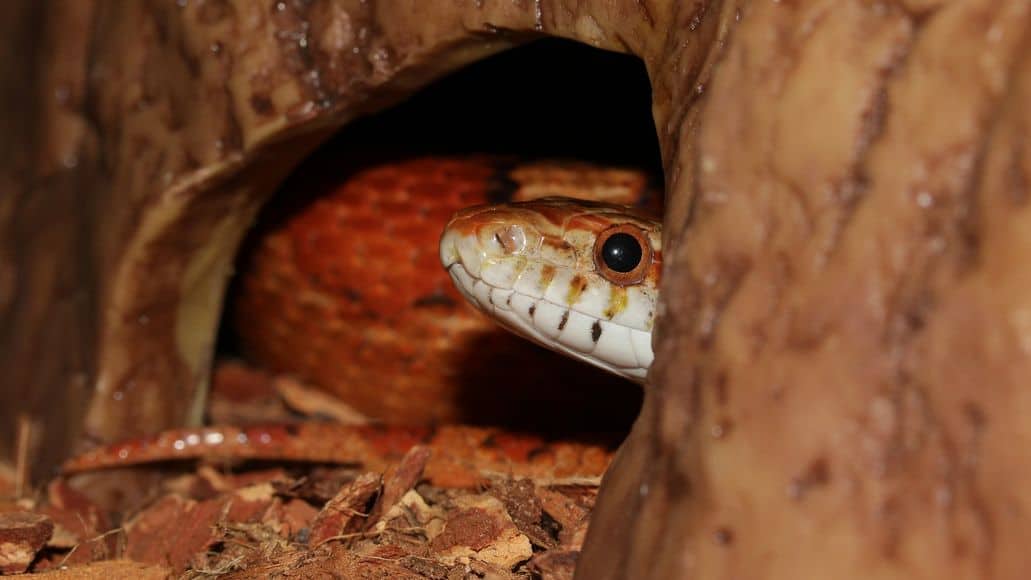
Snakes need places to hide. Without them, they’ll feel exposed and stressed. Put at least two hiding spots in the enclosure: one on the warm side, one on the cool side.
Use hollow logs, caves, or even cardboard boxes. This article lists some of the best snake hides. The hide should be just big enough for your snake to squeeze into comfortably.
Snakes love feeling the walls against their body. It helps them feel safe. If you skip hiding places, your snake might refuse to eat or get defensive. Nobody wants a stressed, snappy pet. Forget about making the tank look “open” for your own sake—your snake’s comfort comes first.
Understanding the Needs Of Pet Snakes
Snakes have their own unique housing and feeding needs. Get these basics down, and you’ll avoid most problems.
Recognizing Appropriate Enclosure Requirements
The enclosure should be at least as long as your snake and half as wide. Size matters more than you might think.
Temperature is huge. Keep a warm side and a cool side in the enclosure. Use a heat pad under one end—never a heat rock. Add a thermostat to keep things steady.
Hiding spots are a must. Toss in boxes, logs, or caves on both sides of the tank. Stick with safe, easy-to-clean bedding: aspen shavings, cypress mulch, or paper towels. Skip cedar and pine—they’re trouble.
Keep humidity between 40 to 60% for most snakes. Make sure to check the specific requirements for your species. Check humidity in the tank with a hygrometer. A water bowl helps, too.
Providing Proper Nutrition
Snakes eat whole prey—think mice or rats, usually pre-killed and frozen. They don’t want chopped meat or veggies, no matter how gourmet you make it.
Feed the right size prey. The prey should match the width of your snake’s thickest spot. If it’s too big, your snake might choke or get injured. Not a risk worth taking.
Young snakes usually eat every 5 to 7 days. Adults? More like every 10 to 14 days. Some of the really big ones stretch it out to once a month. It depends on the species.
Thaw frozen prey all the way, and warm it to room temp or a bit above before feeding. Feeding live prey is risky and should only happen if your vet insists.
Fresh water is essential. Change the water at least weekly, or sooner if it gets gross. Some snakes will even soak in their bowls, so expect a little mess.
Don’t handle your snake for about two days after it eats. Otherwise, you might end up cleaning up regurgitated mice. Not fun for anyone.
Maintaining A Safe And Comfortable Environment
Building a good home for your snake means dialing in the right temperature and humidity. How you handle your snake matters, too—it helps with trust, and honestly, with your own confidence.
Ensuring Correct Temperature And Humidity Levels
Snakes need a temperature gradient in their enclosure. That means you’ll want a warm side and a cooler side, so your snake can pick what feels right.
Temperature Requirements For Popular Species:
- Ball pythons: 88-92°F warm, 78-80°F cool
- Corn snakes: 85-88°F warm, 75-78°F cool
- Boa constrictors: 88-92°F warm, 78-82°F cool
Check humidity with a digital hygrometer. Most snakes like 50-60% humidity. Ball pythons, though, prefer it a bit higher—about 60-70%.
A big water bowl helps bump up humidity. Light misting can help, too, if things get dry. If humidity drops too low, shedding gets messy and respiratory issues can pop up.
Managing Handling And Socialization
Wait at least 48 hours after feeding before picking up your snake. Handling too soon often leads to regurgitation, which no one wants.
Start slow—short sessions, maybe 10-15 minutes. Always support your snake’s body, not just the head or tail. That’s just basic respect, right?
If your snake hisses, strikes, or tries to hide, those are clear stress signals. Give it a break and return it to its enclosure.
Handle your snake once or twice a week, tops. Too much can stress them out and even make them sick. Less is more here.
Common Snake Owner Mistakes To Avoid: Conclusion
Caring for a pet snake isn’t as complicated as it might seem at first. You just need some solid info and a bit of curiosity.
Most mistakes? They happen when new owners get bad advice or skip the research. It’s easy to miss something if you’re not sure what your snake actually needs.
But honestly, you can dodge most problems by learning about your snake’s specific species. Every snake’s got its own preferences—food, heat, housing, all of it.
Here’s what to keep in mind:
- Check the temperature and humidity regularly
- Feed prey that’s the right size, and stick to a schedule
- Handle your snake gently—don’t rush it
- Keep the enclosure clean and escape-proof
Your snake really does rely on you for everything. If you take the time to get the basics down, you’ll set your pet up for a good, healthy life.
Got questions? Don’t be shy—ask around. Online groups and experienced keepers are usually happy to help. And, seriously, find a good exotic vet for checkups and anything weird that pops up.
Snake ownership can be surprisingly rewarding if you stick with it. These animals are fascinating and can make great pets for folks who get what they need.
Start simple, stay curious, and keep learning. With a little effort, you’ll probably have a happy snake for years to come.
Leave a Reply